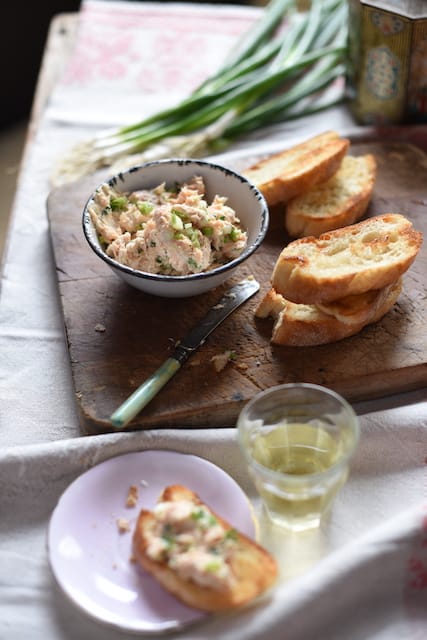In Conversation with Rachel Tolosa Paz, Co-Author of The Food of Argentina

When freelance writer and photographer and co-author of The Food of Argentina: Asado, Empanadas, Dulce de Leche & More (Smith Street Books, 2018) Rachel Tolosa Paz arrived in Argentina for a two-month writing residency in 2014, she didn’t know anyone or speak any Spanish. Yet, it wasn’t long before she felt right at home. The two-months turned into a year, and a significant other. She was soon swept into a lifestyle of social gatherings around food and a different sense of perceiving time and plans. “There is never any need to call ahead, a simple knock on the door will see you greeted with open arms, hugs, kisses, and something being pulled from the pantry for all to enjoy,” she explains in The Food of Argentina.
Tolosa Paz and her friend, author, chef, and restaurant owner Ross Dobson developed The Food of Argentina with insider knowledge and deep sense of admiration for this culture.
Split into four sections (Afuera (outside), En Casa (at home), Asado (barbecue), and merienda (snacks), the over 80 recipes carry the reader through a tour of everyday Argentine staples and their history and significance. Anyone who’s been to Argentina will appreciate the anecdote about the beloved condiment salsa golf or the joke about going to more parties than a miga sandwich!
Tolosa Paz and Dobson picked some of the most iconic Argentine dishes, even making them accessible and adaptable to whatever ingredients you have (or don’t have) in your local grocery store. Her photography of dishes and classic Argentine scenes – the tango dancers in La Boca, Recoleta Cementary, rural gauchos and an asado scene that incites immediate longing, for example – seem to be a perfect antidote to the quarantine blues. In this new pandemic-stricken world, the reader feels an intimate connection with another space and cuisine through these images.
The concept of time in Argentina, writes Tolosa Paz in the book, “is never linear, it is woven, even circular. If you can give yourself over to this concept, then you will fully appreciate the liberty that comes with not having to be anywhere at any given hour.,” writes Tolosa Paz.
We can’t hop on a plane to South America, but with The Food of Argentina, both new and seasoned lovers of Argentine and its cuisine can experiment with new tastes, and maybe even channel this more circular sense of time.
We spoke with Rachel about how she and her friend Ross developed the book, travel, connect with others during COVID-19 and of course, all the best Argentine food.
First, thank you so much for writing this amazing book, Rachel and Ross, and congrats on your first book, Rachel! Everything from the lovely language, stunning photographs, and charming design is a delight to read. You forged your friendship 15 years ago, how did that moment at the Green Park Hotel end in writing a book about Argentine food together?Whose idea was it?
Thank you! When I returned to Australia after living in Argentina I had the idea to write a cook book about Argentina and I approached my old friend, Ross to see if he thought it could work. I am not a foodie so I definitely needed Ross’ expertise for the recipes and his experience having written so many cook books! Having worked as a bookseller for a long time I thought a cook book would provide the opportunity to combine my skills as a photographer and writer together with recipes that might appeal to a wider audience.
I also knew having lived in Argentina that it was really hard to find any book in English on Argentina – a beautiful, pictorial, souvenir gift book that could also explain some of the nuances of Argentine culture to a tourist. One thing I don’t think either Ross or I expected was that the book ended up really appealing to the Argentine expat community. I guess at its heart, the book tries to capture the romance of the Argentine table and for Argentine expats, I think it taps into their nostalgia for their home country.
Rachel, you mention you’ve been an avid traveler since you first jumped on a plane to India by yourself at age 19. You’ve lived in multiple countries and experienced multiple cultures. Besides your husband being Argentine, what about Argentina was different from other places you’ve lived, and the country whose food you ended up writing a book about?
I think, quite honestly, I felt very much at home in Argentina from almost the first day I arrived. Which in some ways is no mean feat since I didn’t speak a word of Spanish when I arrived and knew absolutely no one. What really struck me was the warmth and generosity of the people, the way Argentines talk (and talk and talk!) and the way they gather for asados or to drink mate.
I never felt alone in Argentina and in lots of ways, it reminded me of growing up in a small country town in rural New South Wales in Australia. Relationships and community are really important and I liked the way in which you could just pass by someone’s house and pop in unannounced – there wasn’t the endless planning and timetabling that exists in big cities.
Rachel, what was the first “wow” moment you had with food in Argentina? Did that make it into the book? And what was the first thing you wanted Ross to try?
I like really simple food and I think my favourite go-to food in Argentina is always the choripan! And yes, it had to be in the book! For me there is nothing like a grilled sausage in a crispy, white bread roll with dripping chimmichurri and salsa criolla. My husband, Agustin and I took Ross to the choripan stalls at Costanera Sur in Buenos Aires which is a beautiful spot by the river.
Even though it is really a street food, every little stall has tables and chairs and everyone sits down to enjoy the moment – tourists, construction workers, office workers, families – it is a great atmosphere.
Foreigners often commit faux paus around traditions of food. In Argentina, I’d often hear of people being chastised for touching the mate straw (a big no no!). Rachel, do you have any funny or notable “oops!” moments with food, cooking, or meals in Argentina? Anything you’d warn travelers not to do?
Asados in Argentina are meat events and there are many rounds of beef cuts to try from molleja (sweetbreads), morcilla (blood sausage) to chinchulines (intestines) – so I’d say it is best to try everything at an asado so as not to offend the asador!

There are over 80 recipes in this book. I’m sure it was very hard to narrow down which to include, especially with so much great food in Argentina. What was that process like? Did you end up picking your favorites, or ones that you felt were most accessible, or something else?
We decided to structure the book around the ways in which Argentines come together to eat, so there are four chapters: Calle (food that you will find on the street or in restaurants), Casa (home-cooking favourites often influenced by the heritage of the family in the home), Asado (typical dishes that you will find at an asado) and Merienda (the sweet and savoury treats Argentines eat for afternoon tea or when drinking mate).
We tried to keep the book as classic as possible, that said, the food is mostly focused on the Rio de la Plata region around Buenos Aires and including Uruguay. In fact, we also tried to have some variations for cooks outside of Argentina for accessibility when certain ingredients aren’t available.
If you had to pick three recipes from the book to eat for the rest of your life, what would they be? (I know one of mine would definitely be dulce de leche!)
That is a tough one! The empanada recipes are really easy to make and can be adapted to whatever filling… I also love Ross’ smoked trout dip recipe influenced by our time in Patagonia. It is a rustic dip that is so simple to make and delicious on a crusty baguette. And the pastel de papa (shepherd’s pie) is also a great recipe that I often use for winter dinner parties – it came to Argentina via the Welsh immigrants that settled in Patagonia – and with Ross’ addition of smoked chorizo it really is a winner!
For the last few months, the world has come to a screeching halt as a result of the COVID-19 pandemic. With border closings and travel bans, much international travel has also stopped. How has this time of lockdown changed your appreciation for the travels you’ve been able to have and the foods you’ve been able to try around the world? Have you tried to recreate them often? What’s been a way you’ve stayed connected with your multi- continental past during this time?

We are all suffering at the moment, on so many different levels. We were meant to go to Argentina for a month in March 2020 but Argentina closed its borders two days before we were set to leave so I am definitely missing travelling. Not knowing when we might be able to see my husband’s family again is very difficult.
I am very grateful for all of the travel I have done in the past and I guess I am hopeful that we will be more free to do that again in the future. For now, we just need to sit tight, unfortunately. I guess what has helped me to stay connected with my travels has been to really keep in touch with my friends living overseas.
I think it has helped to have an understanding of what is going on elsewhere – one thing that lockdown has created is an even smaller bubble in some ways, the news becomes more focussed on the local and we are not travelling far to know what exists outside of our little bubble. Talking often with my overseas friends gives me a way to connect and know that we are all in this together, no matter where we are living at the moment.
Finally, Pink Pangea is a community of women who love to travel, including many aspiring travel writers. What was the best piece of advice you’ve gotten about living abroad and experiencing a new culture that you’d love to share with Pink Pangea readers?
There was a time when I was living in Argentina when I really struggled with the lack of planning there, the way that time can kind of meander. But a friend of mine there said to me, ‘Don’t have plans, Rachel, have lines.’ It is very abstract advice! But my friend meant – have a goal or endpoint in mind but let life steer the moments in between. I have always thought that was great advice and it really helped to me to open myself up to experiences and opportunities that I may have never known existed.








